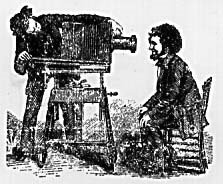The University District Farmers’ Market was first established in in June of 1993 and is often described as “Seattle’s oldest and largest farmers’ market” (uhcca.org). It is currently held year-round on every Saturday from 9am to 2pm at the corner of University Way and NE 50th in the University Heights Center parking lot. This year marks its 15th anniversary, and has always been what’s called a “farmers only” market, meaning that only produce and agricultural goods are sold here. On its opening day in 1993, the U District Farmers’ Market included 17 farmers and brought in 800 shoppers. Currently, it includes 60 farmers and attracts between 4,000 and 5,000 shoppers each Saturday (Baker 28).
The phenomenon of farmers’ markets can be witnessed within the familiar neighborhood of the U District, in the rather ordinary parking lot of the University Heights Community Center. Farmers’ markets exist in an interesting sphere, both in the literal environment and in the consciousness of the consumer. First, the temporary modification of ordinary space shows a creative and collective effort by a community. Because of this, the farmers’ market is a place where these bonds can only be strengthened, extending them past the immediate community and as far as urban-rural resident, buyer-seller, and friend-stranger. The farmers’ market simply brings people together, and can help characterize a region. This is also in part due to the larger social context; history has shown that markets such as ours occur at times of social change and reconsideration. The seemingly simple and nostalgic farmers’ market is actually a product of larger and very complex social and economic processes. This end product is therefore imbued with numerous cultural meanings, and can provide am experience that cannot be replicated.

No comments:
Post a Comment